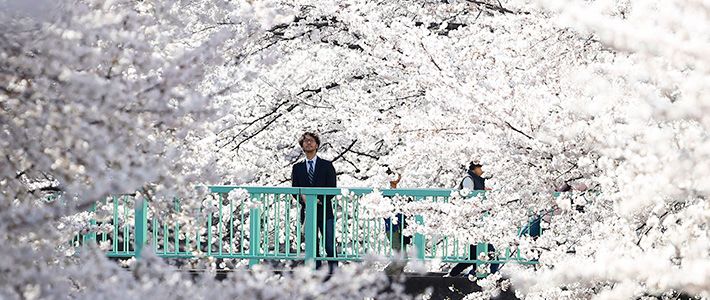
Cherry Blossom Archipelago
Society Culture- English
- 日本語
- 简体字
- 繁體字
- Français
- Español
- العربية
- Русский
Veiled in Pink
It is a well-known fact that sakura, or cherry blossoms, hold a special status in Japanese culture and for centuries have cast a spell over the populace as the wave of pink flowers gradually washes from south to north across the archipelago. Each region boasts its own locations famous for hanami, or blossom viewing, and in early spring these places fill with the festive buzz of revelers partying under blooming trees.
There are a wide variety of sakura native to Japan, such as yamazakura, edohigan, Fuji cherry, and kanhizakura, each presenting a distinct style of flower. Over the centuries the Japanese have also cultivated new types of flowering cherries, including the somei yoshino and the shidarezakura, or weeping cherry tree.
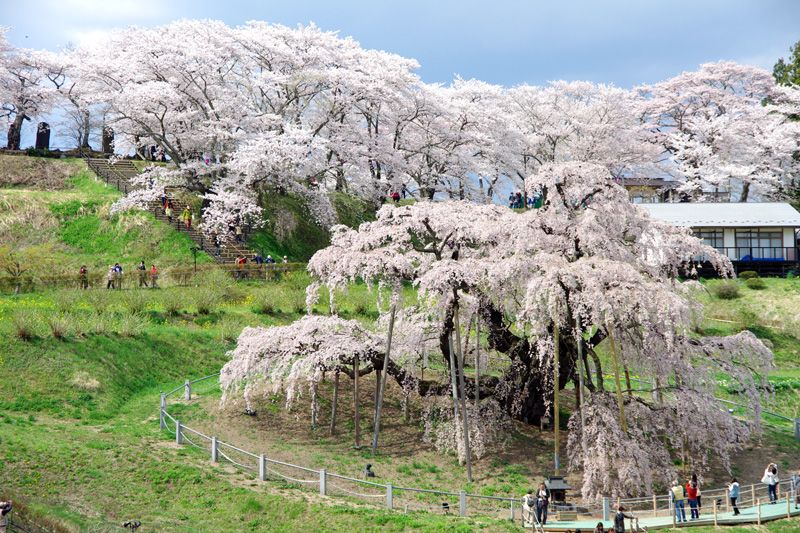 The famous Takizakura (waterfall sakura) in Miharu, Fukushima Prefecture, in full bloom in April 2014. One of Japan’s “three giant cherry trees,” the ancient sakura is estimated to be over 1,000 years old and has an east-west branch spread of 25 meters. (© Jiji)
The famous Takizakura (waterfall sakura) in Miharu, Fukushima Prefecture, in full bloom in April 2014. One of Japan’s “three giant cherry trees,” the ancient sakura is estimated to be over 1,000 years old and has an east-west branch spread of 25 meters. (© Jiji)
The somei yoshino is the most widely planted variety of flowering cherry in Japan. It was developed in Edo, present-day Tokyo, in the mid-nineteenth century as a cross between the yamazakura and ōshimazakura varieties. Unlike varieties that sprout leaves and flowers concurrently, the somei yoshino comes into full bloom prior to putting on foliage, painting parks and other public spaces with a magical light-pink tinge. Many sakura lovers credit this for the broad diffusion of the variety over the last century and a half.
Spreading Blossoms
In advance of the hanami season each year, the Japan Meteorological Agency releases sakura zensen (cherry blossom front) maps showing when sakura are expected to begin blooming and when they will reach full bloom in each part of Japan. For the central part of the archipelago—the islands of Honshū, Kyūshū, and Shikoku—the maps are based on predictions for somei yoshino. In southerly and northerly climates less suited to the somei yoshino, the blossom front is based on other varieties: In Okinawa Prefecture the JMA uses the kanhizakura, while in Hokkaidō it bases its predictions on ezoyamazakura.
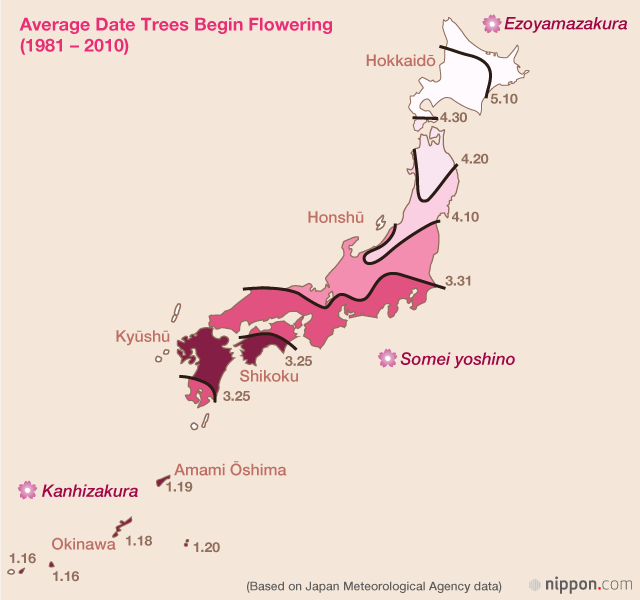
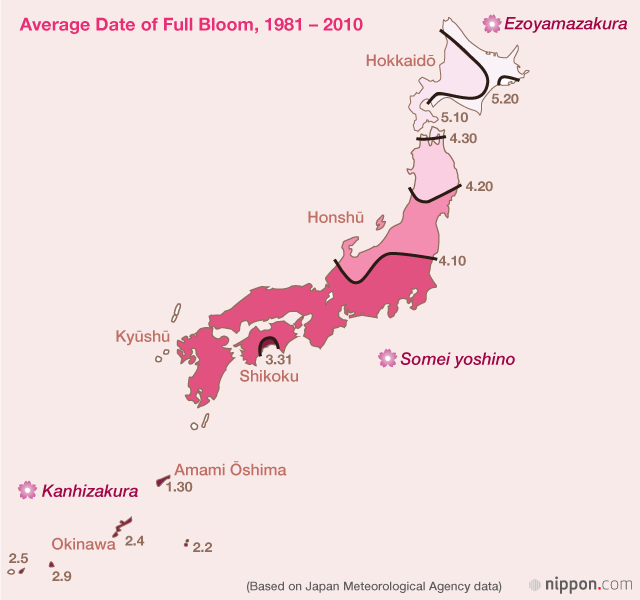
As the maps show, the cherry blossom season starts in southern latitudes, getting into full swing in mid-January in Okinawa and Amami Ōshima, where the trees bloom through early February. The blossom front sweeps north through the main part of the archipelago in March and April, reaching Hokkaidō in May. The earliest blossom season for the somei yoshino is in Kōchi Prefecture on the island of Shikoku, where the trees come into full grandeur in late March. Other regions follow, beginning in western Japan early in April and concluding at the northern tip of Honshū at the end of the month.
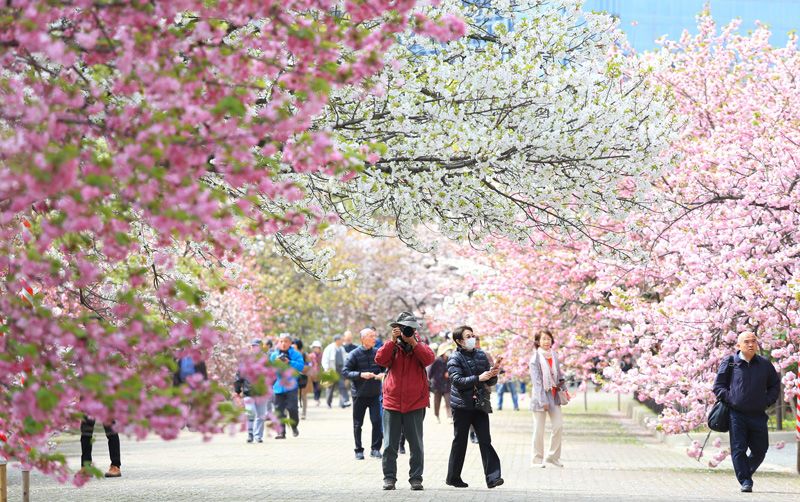 Sakura in full bloom near the Japan Mint in Osaka, April 2015. (© Jiji)
Sakura in full bloom near the Japan Mint in Osaka, April 2015. (© Jiji)
According to the JMA’s predictions for 2016, Kyūshū and Shikoku will see a normal or slightly late year in terms of blossoms opening, while other areas will have an average or somewhat early start to the sakura season. The trees in the Kantō area, where Tokyo is located, are expected to start blooming late in March.
(Banner photo: Cherry blossoms in full bloom in Tokyo. © Reuters/Aflo)